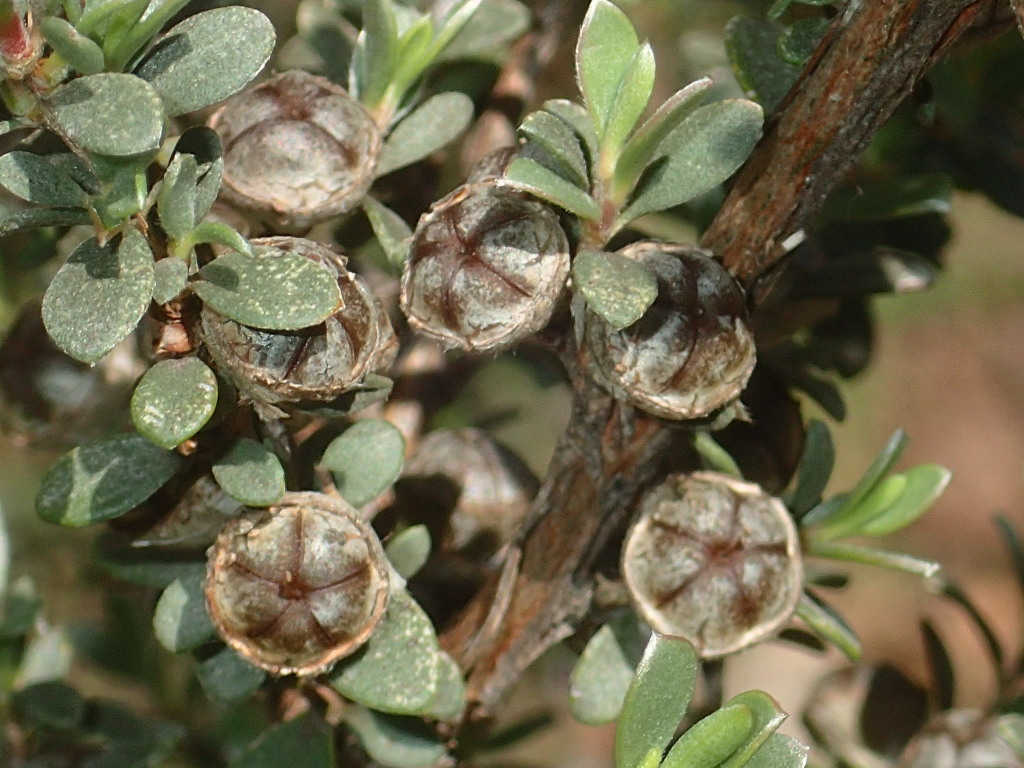Leptospermum
Shrubs or more rarely trees, with smooth and shedding, fibrous or papery layered bark; young stems silky, glabrescent, with or without stem flanges or grooves near the base of leaves. Leaves alternate. Flowers actinomorphic, bisexual or rarely male only, axillary on condensed leafy shoots, solitary. Petals 5, broadly obovate, deciduous; sepals 5, persisting or falling from the fruit; stamens c. 10–45, shorter than the petals, anthers with a gland near the connective, versatile, opening by slits. Fruit a loculicidal capsule, usually long persisting, 5-locular, valves woody, opening at the apex; seeds linear with a linear-striate surface pattern.
44 species from eastern Australia, New Zealand, Cook Islands and Malesia, 39 in Australia.
The common name of Teatree derives from the practice of brewing the leaves of some species for tea.
Leptospermum as conventionally treated is polyphyletic and now consists of five genera: Apectospermum Peter G.Wilson, Leptospermopsis S.Moore (both endemic to WA), Aggreflorum Peter G.Wilson, Gaudium and Leptospermum. Only Leptospermum and Gaudium present in Victoria. Leptospermum is distinguished from the other four genera by the woody, usually persistent fruits with distinctly woody valves and linear seeds with a striate surface.
Lyne, A. (1996). Leptospermum. In: Walsh, N.G.; Entwisle, T.J., Flora of Victoria Vol. 3, Dicotyledons Winteraceae to Myrtaceae, pp. 1009–1019. Inkata Press, Melbourne.
 Spinning
Spinning



